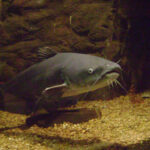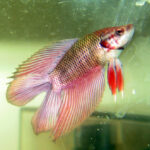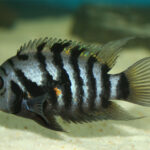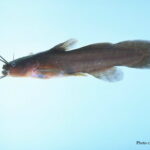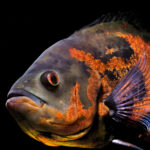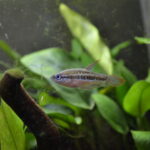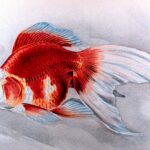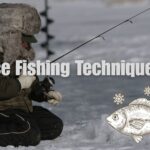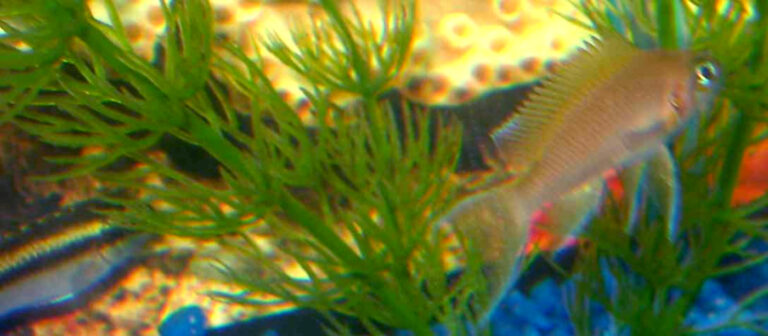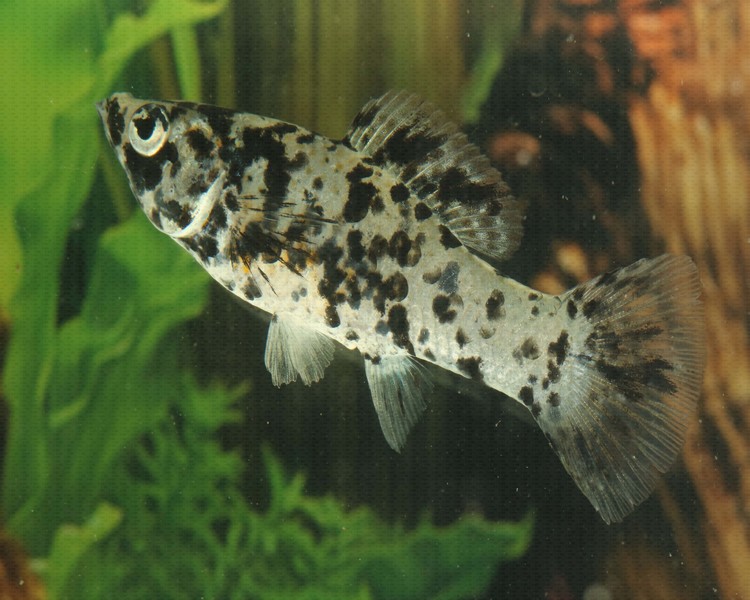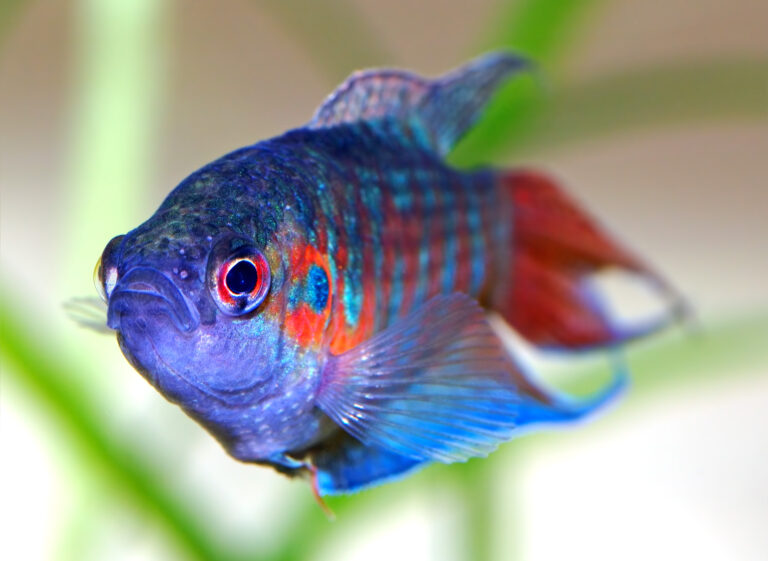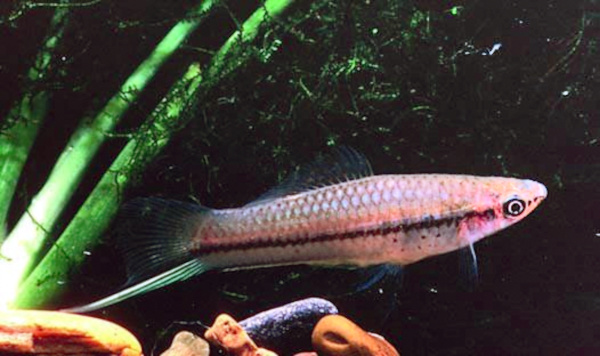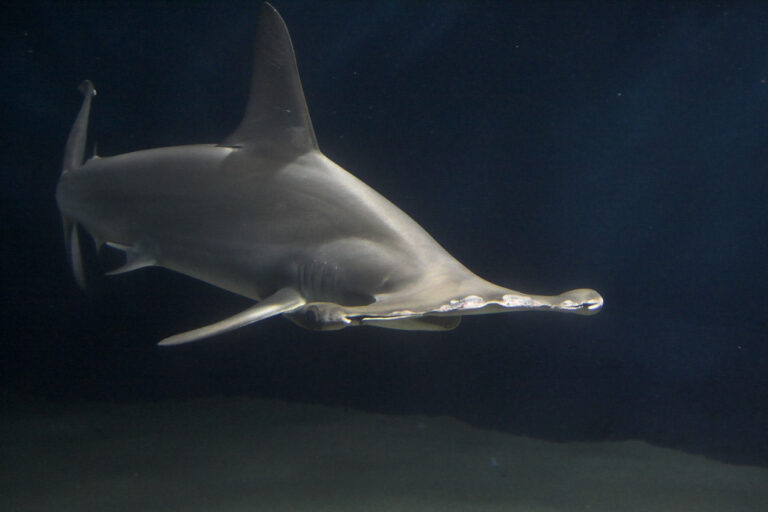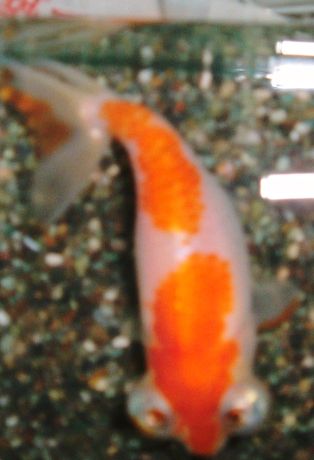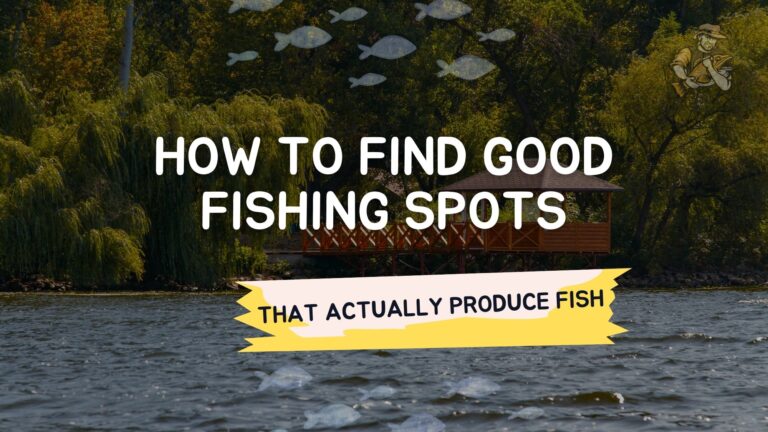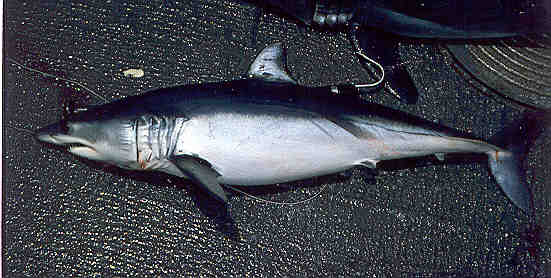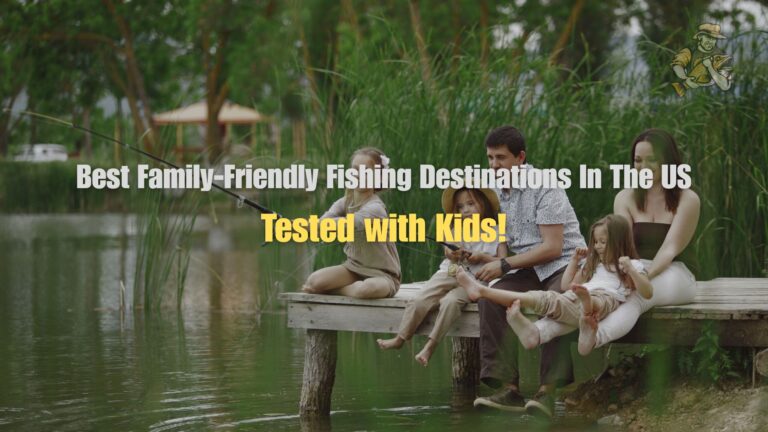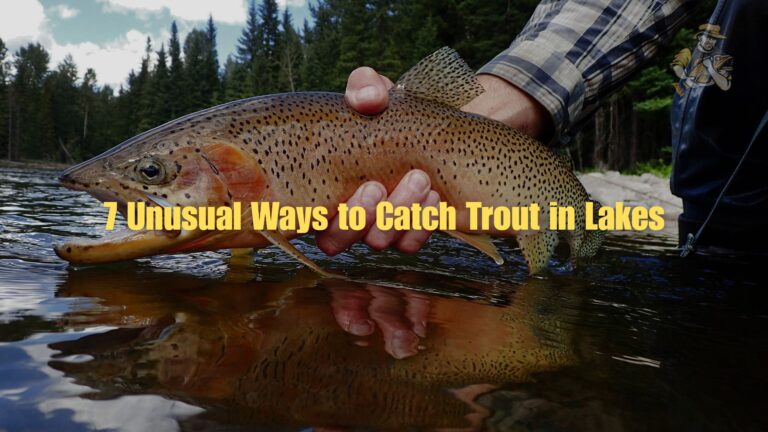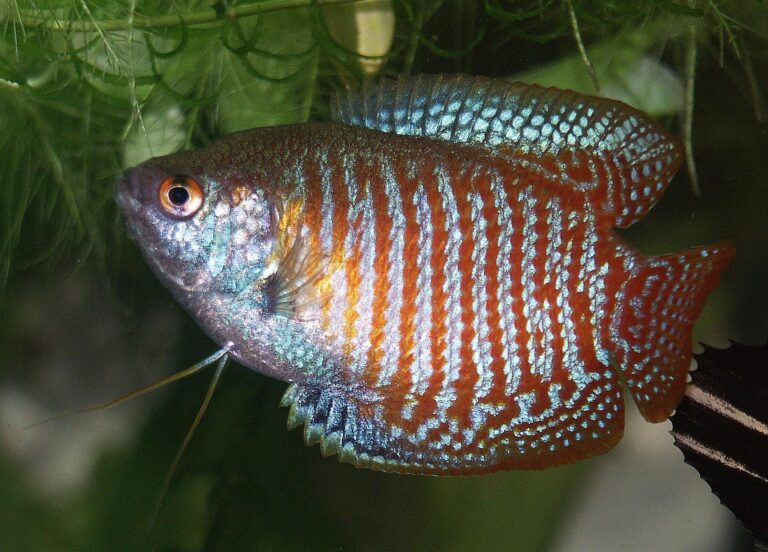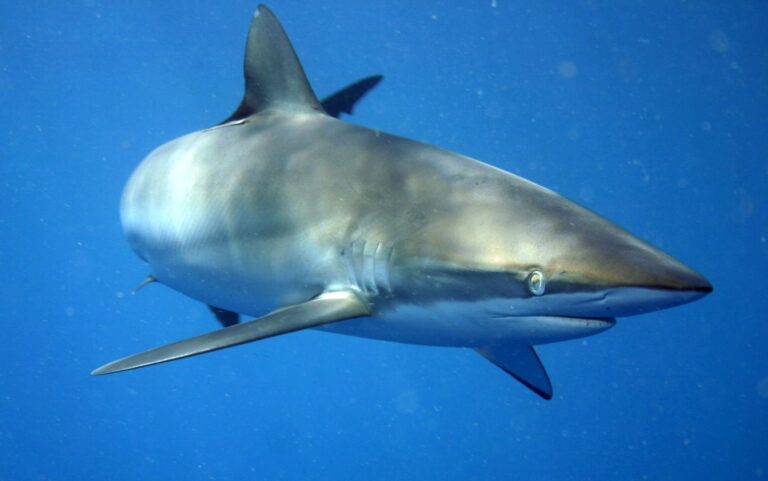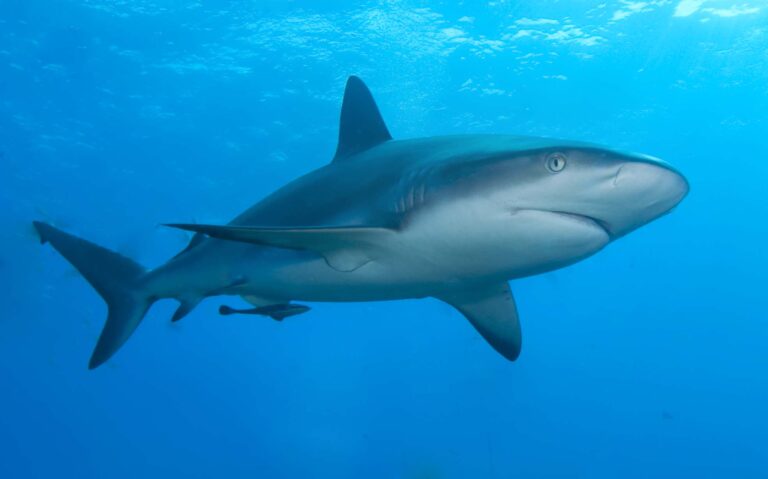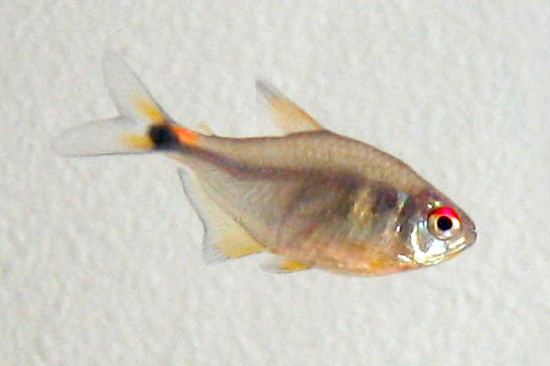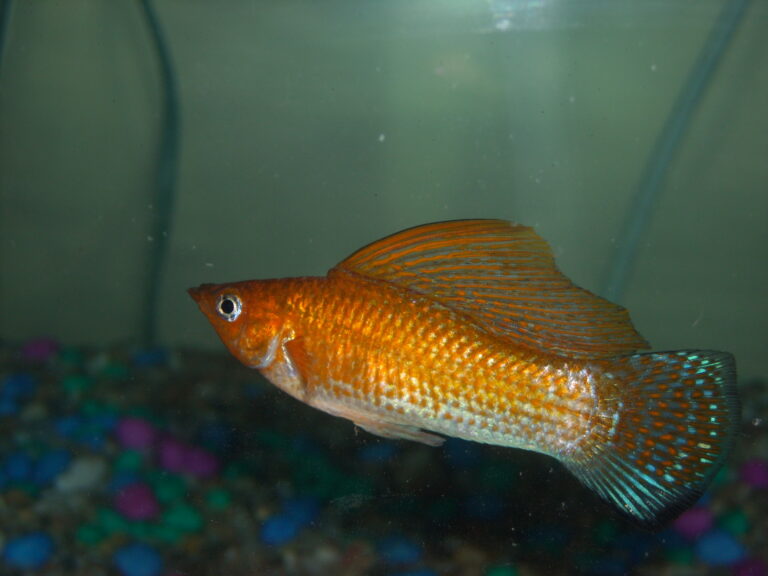Smallmouth Bass
By Ryan Maron | Last Modified: July 8, 2025
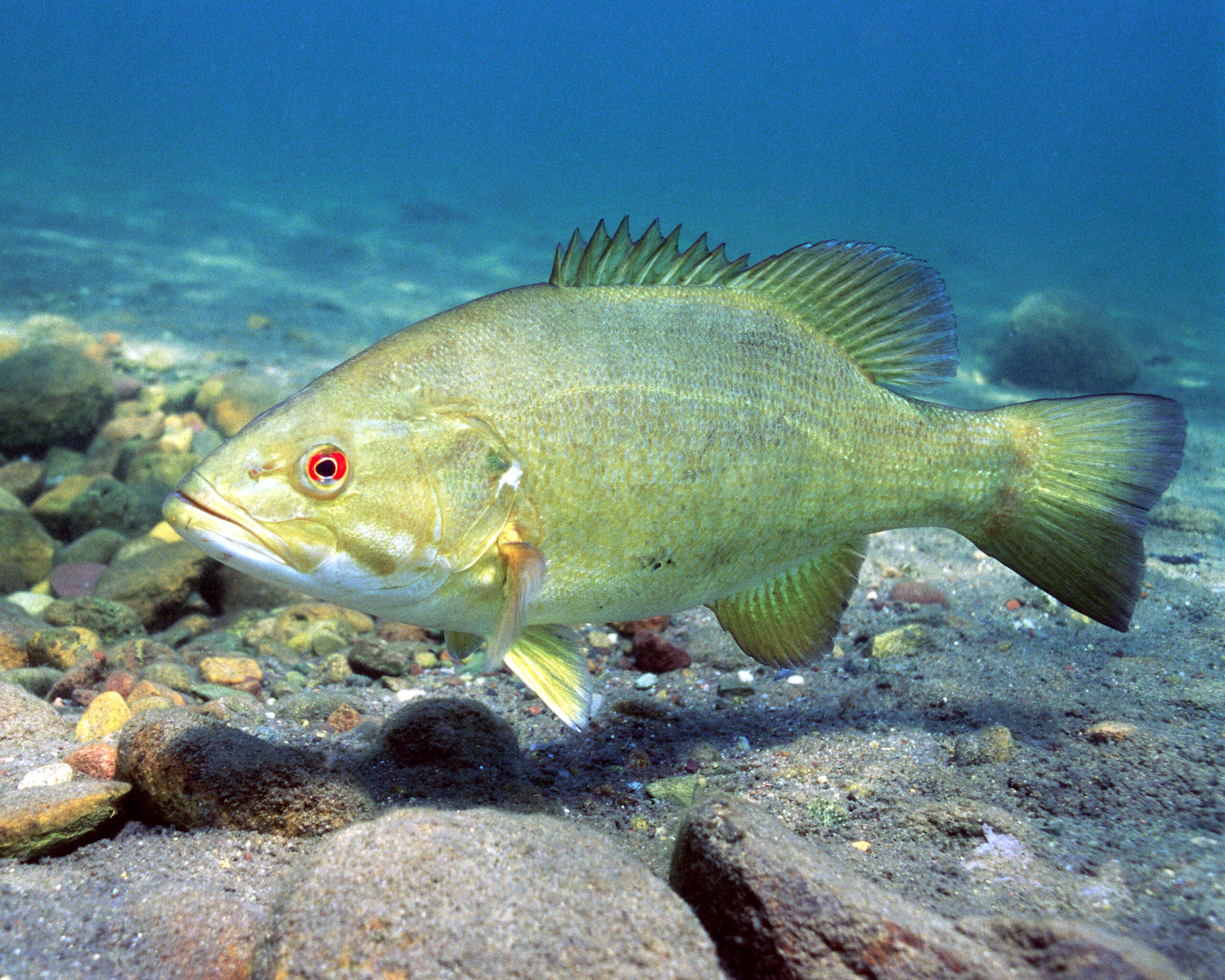
The Smallmouth Bass represents one of North America’s most prized freshwater game fish, combining impressive fighting ability with remarkable adaptability across diverse aquatic ecosystems. Known scientifically as *Micropterus dolomieu*, this member of the black bass family has earned widespread recognition among anglers and researchers alike for its aggressive feeding behavior and complex ecological interactions. The species serves as both a keystone predator in many freshwater systems and an important indicator of ecosystem health, making it crucial for understanding the delicate balance of North American lakes and rivers. From its native range in the Great Lakes region to its widespread distribution across temperate waters, the Smallmouth Bass plays a vital role in maintaining prey fish populations while supporting multi-billion dollar recreational fisheries.
| Feature | Details |
|---|---|
| Common Name | Smallmouth Bass |
| Scientific Name | Micropterus dolomieu |
| Family | Centrarchidae |
| Typical Size | 30-40 cm (12-16 in), 1-3 kg (2-7 lbs) |
| Habitat | Clear lakes and rocky streams |
| Diet | Piscivorous and invertivorous |
| Distribution | North American temperate waters |
| Conservation Status | Least Concern |
Taxonomy & Classification
The Smallmouth Bass belongs to the family Centrarchidae, commonly known as the sunfish family, which encompasses numerous North American freshwater species including largemouth bass, bluegill, and crappie. First described by French naturalist Bernard Germain de Lacépède in 1802, *Micropterus dolomieu* derives its scientific name from the Greek words “mikros” (small) and “pteron” (fin), while “dolomieu” honors French geologist Déodat Gratet de Dolomieu.
Within the genus *Micropterus*, the Smallmouth Bass shares evolutionary lineage with six other recognized black bass species. Genetic analysis reveals the species diverged from its closest relative, the largemouth bass (*Micropterus salmoides*), approximately 3-5 million years ago during the Pliocene epoch. This taxonomic relationship explains many shared behavioral and physiological characteristics between these two prominent game fish species.
Recent molecular studies have identified distinct genetic populations of Smallmouth Bass across different watersheds, suggesting potential subspecies or geographic variants. The northern strain, primarily found in Great Lakes tributaries, exhibits different growth rates and temperature tolerances compared to southern populations inhabiting Ozark Mountain streams and Tennessee River systems.
Physical Description
The Smallmouth Bass displays distinctive morphological features that distinguish it from related centrarchid species. Adults typically measure 30-40 centimeters in length and weigh between 1-3 kilograms, though exceptional specimens can exceed 50 centimeters and 4 kilograms. The species exhibits pronounced sexual dimorphism, with males generally smaller but developing more vibrant breeding coloration.
The body profile presents a laterally compressed, fusiform shape optimized for both burst speed and maneuverability in complex rocky environments. The dorsal fin configuration consists of a continuous structure with 9-11 spiny rays followed by 13-15 soft rays, creating the characteristic notched appearance. The caudal fin displays a moderate fork, providing efficient propulsion during pursuit of prey fish.
Coloration varies significantly based on habitat conditions and seasonal cycles. The base coloration ranges from golden-bronze to dark olive-green, with distinctive vertical bars or blotches along the flanks. These markings, more pronounced in juveniles, serve as effective camouflage among rocky substrates and fallen timber. The eye displays a characteristic bronze or red iris, and a distinct dark line extends from the snout through the eye to the gill cover.
The mouth structure reveals the species’ predatory nature, with the maxilla extending to approximately the middle of the eye rather than beyond it, distinguishing Smallmouth Bass from their largemouth cousins. The pharyngeal teeth arrangement facilitates processing of both fish prey and invertebrate food sources.
Habitat & Distribution
The Smallmouth Bass demonstrates remarkable habitat plasticity, thriving in diverse freshwater environments across North America. Native distribution encompasses the Great Lakes drainage, upper Mississippi River system, and portions of the Atlantic slope from southern Canada to northern Alabama. Through extensive stocking programs and natural range expansion, populations now exist throughout temperate North America and in select international locations.
Optimal Smallmouth Bass habitat features clear, cool water with rocky or gravel substrates, moderate current flow, and abundant structural complexity. Water temperatures between 15-25°C support peak metabolic activity, though the species tolerates seasonal fluctuations from near-freezing to 30°C. Dissolved oxygen levels must exceed 5 parts per million for sustained populations, making the species an excellent indicator of water quality.
Lake-dwelling populations typically inhabit littoral zones with rocky points, submerged boulders, and steep drop-offs providing ambush opportunities and thermal refugia. These fish exhibit strong site fidelity to specific structural features, often returning to the same locations seasonally. Stream populations prefer pool-riffle sequences with moderate gradient, utilizing deeper pools for overwintering and spawning areas.
The species demonstrates considerable depth flexibility, commonly found from surface waters to depths exceeding 30 meters in large lakes. Seasonal movements follow thermal stratification patterns, with fish moving to deeper, cooler waters during summer months and returning to shallows during spring and fall periods of optimal temperature.
Habitat degradation through sedimentation, pollution, and flow alteration significantly impacts Smallmouth Bass populations. The species’ preference for clean, rocky environments makes it particularly vulnerable to watershed disturbance and serves as an early warning system for ecosystem health.
Diet & Feeding Behavior
The Smallmouth Bass exhibits opportunistic predatory behavior with diet composition varying significantly based on size, season, and prey availability. Juvenile fish primarily consume zooplankton, aquatic insect larvae, and small crustaceans, gradually transitioning to larger prey items as they mature. Adult Smallmouth Bass maintain a diverse diet including fish, crayfish, aquatic insects, and occasionally terrestrial prey items.
Prey fish constitute 40-60% of adult diet in most ecosystems, with species selection reflecting local forage communities. Common targets include yellow perch, darters, minnows, and juvenile centrarchids. The hunting strategy combines ambush predation from structural cover with active pursuit in open water. Visual predation dominates during daylight hours, while nocturnal feeding relies heavily on lateral line detection of water displacement.
Crayfish represent a crucial dietary component, particularly in systems with abundant crustacean populations. The bass employs specialized handling techniques to process armored prey, often manipulating crayfish to swallow them head-first. This feeding relationship significantly influences crayfish community structure and behavior patterns.
Seasonal feeding intensity peaks during pre-spawn and post-spawn periods when metabolic demands increase. Water temperature directly affects feeding rates, with optimal consumption occurring between 18-24°C. During winter months, feeding activity decreases substantially as metabolism slows and prey becomes less active.
The species demonstrates size-selective predation, with gape limitation constraining maximum prey dimensions. This selectivity influences prey fish community structure, often favoring deeper-bodied species less vulnerable to bass predation. Feeding success correlates strongly with structural complexity, as ambush sites increase capture efficiency.
Behavior & Adaptations
Smallmouth Bass display complex behavioral patterns reflecting their evolutionary adaptation to dynamic freshwater environments. Territorial behavior intensifies during breeding season, with males establishing and defending nesting sites through aggressive displays and physical confrontations. Outside of spawning periods, the species exhibits more flexible social organization, ranging from solitary individuals to loose aggregations around productive feeding areas.
Seasonal migration patterns demonstrate remarkable site fidelity and navigation abilities. Fish regularly move between deep-water wintering areas and shallow spawning grounds, covering distances up to several kilometers in large lake systems. These movements follow predictable routes along structural features, suggesting sophisticated spatial memory and orientation mechanisms.
Thermoregulatory behavior plays a crucial role in daily and seasonal activity patterns. Smallmouth Bass actively seek optimal thermal conditions, utilizing thermal refugia during extreme temperatures and following thermal gradients during feeding periods. This behavior requires constant adjustment to changing environmental conditions and significantly influences distribution patterns.
The species has evolved sophisticated predator avoidance strategies, including rapid escape responses, utilization of structural cover, and coordinated schooling behavior in juvenile stages. Adult fish demonstrate learned responses to fishing pressure, modifying feeding times and locations in heavily fished waters.
Sensory adaptations include acute vision optimized for detecting movement and distinguishing prey from background structure. The lateral line system provides detailed information about water movement and pressure changes, essential for both prey detection and predator avoidance. These sensory capabilities enable effective hunting in low-light conditions and turbid water.
Communication occurs through visual displays, body positioning, and acoustic signals during territorial encounters. Breeding males produce grunting sounds during nest guarding and courtship activities, suggesting more complex communication than previously recognized.
Reproduction & Life Cycle
The Smallmouth Bass reproductive cycle follows a highly structured pattern synchronized with seasonal temperature and photoperiod changes. Spawning typically occurs when water temperatures reach 15-20°C, usually during late spring in temperate regions. This timing ensures optimal conditions for egg development and early fry survival.
Males initiate the reproductive process by constructing circular nests in sandy or gravelly areas at depths of 1-6 meters. Nest construction involves vigorous sweeping motions with the caudal fin, creating depressions 30-60 centimeters in diameter. Site selection prioritizes areas with gentle current flow, protection from wave action, and proximity to deeper water refugia.
Courtship behavior involves elaborate displays as males attract females to their nests through ritualized swimming patterns and aggressive exclusion of competitors. Successful males may spawn with multiple females over a 2-3 week period, with each spawning event producing 2,000-15,000 eggs depending on female size and condition.
Following fertilization, males assume sole responsibility for parental care, aggressively defending eggs and fry from predators and nest disturbance. The incubation period lasts 3-10 days depending on water temperature, with optimal development occurring at 18-22°C. Newly hatched fry remain in the nest for an additional 5-10 days, absorbing yolk sacs while developing swimming ability.
Post-larval fry disperse from nests as free-swimming juveniles approximately 10-15 millimeters in length. Growth rates vary considerably based on temperature, food availability, and population density. First-year fish typically reach 5-10 centimeters by winter, with sexual maturity achieved at 2-4 years of age and 20-25 centimeters in length.
The reproductive success of Smallmouth Bass populations depends heavily on stable water levels during spawning season and adequate nest site availability. Climate change and human water management practices increasingly threaten reproductive success through altered temperature regimes and unpredictable water level fluctuations.
Predators & Threats
Throughout their life cycle, Smallmouth Bass face predation pressure from diverse aquatic and terrestrial predators. Egg and larval stages experience the highest mortality rates, with nest predation by sunfish, suckers, and other centrarchids significantly reducing recruitment success. Aquatic insects, particularly diving beetles and dragonfly nymphs, consume large numbers of newly hatched fry.
Juvenile Smallmouth Bass encounter predation from larger fish species including northern pike, muskie, walleye, and adult bass. Avian predators such as herons, egrets, cormorants, and kingfishers target fish in shallow water areas. The species has evolved behavioral adaptations including schooling, cover utilization, and crepuscular activity patterns to minimize predation risk.
Adult Smallmouth Bass have fewer natural predators due to their size and defensive capabilities, though large pike, muskie, and occasionally lake trout may prey upon smaller individuals. Human activities represent the primary threat to adult populations through recreational and commercial fishing pressure, habitat modification, and pollution impacts.
Climate change poses emerging threats through altered thermal regimes, increased frequency of extreme weather events, and shifting precipitation patterns. Rising water temperatures may exceed physiological tolerance limits in southern populations, while changing ice cover duration affects northern spawning cycles.
Water quality degradation from agricultural runoff, urban development, and industrial discharge creates chronic stress conditions that reduce reproductive success and increase disease susceptibility. Sedimentation from erosion particularly impacts spawning habitat quality by filling interstitial spaces in gravel beds essential for egg survival.
Invasive species introductions continue to alter ecosystem dynamics and create novel competitive pressures. Round gobies, zebra mussels, and non-native fish species modify food webs and habitat structure, forcing adaptive responses from native Smallmouth Bass populations.
Overfishing represents a localized but significant threat in popular fishing destinations, particularly when combined with habitat degradation that reduces carrying capacity. Selective harvest of larger individuals can alter population demographics and reduce reproductive potential.
Conservation Status
The International Union for Conservation of Nature (IUCN) currently classifies the Smallmouth Bass as “Least Concern” due to its wide distribution, stable populations, and successful adaptation to diverse environments. However, this global assessment masks significant regional variations in population health and emerging conservation challenges across the species’ range.
Native populations in the Great Lakes region face mounting pressures from habitat modification, invasive species interactions, and climate change effects. Several state wildlife agencies have implemented enhanced monitoring programs to track population trends and identify early warning signs of decline. These efforts reveal concerning patterns in some watersheds, including reduced recruitment success and shifts in size structure.
Habitat restoration programs focus on improving spawning areas through sediment reduction, riparian buffer establishment, and flow regime management. The success of these initiatives depends heavily on watershed-scale coordination and long-term funding commitments. Notable examples include Great Lakes tributary restoration projects that have demonstrated measurable improvements in Smallmouth Bass recruitment rates.
Climate adaptation strategies increasingly influence conservation planning as temperature and precipitation patterns shift beyond historical ranges. Resource managers are developing assisted migration protocols and identifying climate refugia that may support populations under future conditions. These efforts require unprecedented collaboration between agencies and integration of climate science with traditional fisheries management.
Genetic diversity conservation has emerged as a priority given the distinct population characteristics observed across different watersheds. Several programs now maintain broodstock collections representing regional genetic variants, ensuring preservation of adaptive traits that may become crucial under changing environmental conditions.
The species’ popularity as a game fish creates both opportunities and challenges for conservation efforts. Strong angler support generates funding for habitat projects and research initiatives, while fishing pressure requires careful regulation to maintain sustainable populations. Modern catch-and-release practices have significantly improved survival rates, though implementation varies among user groups.
Human Interaction
The Smallmouth Bass holds exceptional cultural and economic significance throughout North America, supporting a multi-billion dollar recreational fishing industry that encompasses tournaments, guide services, tackle manufacturing, and tourism. The species’ reputation as an outstanding game fish stems from its aggressive fighting ability, acrobatic jumping behavior, and willingness to strike artificial lures.
Recreational fishing for Smallmouth Bass involves diverse techniques adapted to different habitat types and seasonal conditions. Popular methods include topwater lures during early morning and evening periods, soft plastic presentations for bottom structure, and spinnerbaits for covering water efficiently. The development of specialized Smallmouth Bass fishing techniques has created an entire subculture within the angling community.
Tournament fishing has elevated the species to iconic status, with professional circuits generating millions of dollars in prize money and media coverage. These events showcase advanced fishing techniques and contribute to scientific understanding through data collection on fish behavior and population dynamics. However, tournament-related mortality and displacement effects require ongoing monitoring and regulation.
Commercial aquaculture operations produce millions of Smallmouth Bass fingerlings annually for stocking programs and private pond management. These hatchery programs support both conservation objectives and recreational fishing opportunities, though genetic integrity concerns have led to increased emphasis on native strain preservation.
The species serves important educational and research functions, with numerous universities and research institutions utilizing Smallmouth Bass as model organisms for studying predator-prey dynamics, habitat requirements, and ecosystem interactions. This research contributes to broader understanding of freshwater ecology and informs management decisions.
Urban fishing programs increasingly feature Smallmouth Bass as target species for introducing diverse communities to angling opportunities. These initiatives recognize the species’ accessibility in many metropolitan areas and its appeal to beginning anglers seeking exciting fishing experiences.
Fish consumption advisories in some regions reflect environmental contamination concerns, particularly mercury and polychlorinated biphenyl accumulation in predatory fish. Public health authorities provide guidance on safe consumption levels while environmental agencies work to address pollution sources.
Interesting Facts
The Smallmouth Bass possesses remarkable jumping ability, often launching completely out of the water when hooked, earning it the nickname “bronzeback” among anglers. This aerial display results from the species’ muscular build and behavioral response to capture stress, creating one of freshwater fishing’s most memorable experiences.
Individual Smallmouth Bass demonstrate extraordinary site fidelity, with tagged fish returning to the same rock pile or fallen tree for multiple years. This behavior has allowed researchers to study individual fish personalities and learning capabilities, revealing sophisticated spatial memory and decision-making processes previously underestimated in fish species.
The species exhibits remarkable longevity in some environments, with documented individuals exceeding 15 years of age in northern waters. Growth rates vary dramatically based on environmental conditions, with southern populations reaching larger sizes more quickly while northern fish achieve greater longevity through slower metabolic rates.
Smallmouth Bass possess exceptional low-light vision capabilities, with specialized eye structures that concentrate available light for effective nocturnal hunting. This adaptation allows continued feeding activity during dawn and dusk periods when many prey species become more active and vulnerable.
The species demonstrates tool use behavior, manipulating rocks and debris to access hidden prey items such as crayfish and insect larvae. This problem-solving ability suggests higher cognitive capabilities than traditionally attributed to fish species and challenges assumptions about piscine intelligence.
Acoustic communication plays a more significant role in Smallmouth Bass behavior than previously recognized, with males producing distinct vocalizations during territorial disputes and courtship activities. These sounds, primarily low-frequency grunts and pops, can be detected by specialized underwater hydrophones and vary between geographic populations.
Some Smallmouth Bass populations exhibit partial migration patterns, with portions of the population undertaking seasonal movements while others remain resident in local areas. This behavioral polymorphism provides population resilience against environmental disturbances and demonstrates the species’ adaptive flexibility.
The largest recorded Smallmouth Bass weighed 5.41 kilograms and was caught in Dale Hollow Lake, Tennessee, in 1955. This record has stood for nearly seven decades, reflecting both the species’ growth potential and the rarity of optimal conditions producing trophy-sized individuals.
Conclusion
The Smallmouth Bass stands as a testament to successful freshwater fish adaptation and conservation, maintaining stable populations across diverse North American ecosystems while supporting significant recreational and economic interests. Its role as both apex predator and indicator species makes continued monitoring and habitat protection essential for maintaining healthy aquatic communities. As climate change and human development pressures intensify, the species’ remarkable adaptability and strong conservation support provide optimism for long-term population persistence and continued angling opportunities for future generations.
Share The Article:
More Fish Species:
-
Kribensis Cichlid
The Kribensis Cichlid (Pelvicachromis pulcher) stands as one of West Africa’s most remarkable freshwater fish species, captivating aquarists and…
-
Marble Molly
The Marble Molly (*Poecilia latipinna*) stands as one of the most recognizable and widely distributed ornamental fish species in…
-
Paradise Fish
The Paradise Fish stands as one of the most remarkable representatives of the labyrinth fish family, captivating aquarists and…
-
Green Swordtail
The Green Swordtail (Xiphophorus hellerii) represents one of the most recognizable and ecologically significant freshwater fish species in both…
-
Hammerhead Shark
The Hammerhead Shark represents one of the most distinctive and fascinating apex predators in marine ecosystems worldwide. These remarkable…
-
Celestial Eye Goldfish
The Celestial Eye Goldfish represents one of the most distinctive varieties within ornamental aquaculture, known scientifically as Carassius auratus….
Discover
-
How to Find Good Fishing Spots That Actually Produce Fish
Finding productive fishing spots is often what separates successful anglers from those who go home empty-handed. It’s not just…
-
Shortfin Mako Shark
The Shortfin Mako Shark stands as one of the ocean’s most remarkable predators, combining exceptional speed with sophisticated hunting…
-
Pensacola Fishing Tides Decoded: Fish More, Catch More
Look, I’ve spent the better part of my fishing life getting absolutely schooled by Pensacola’s tides. Just last month,…
-
7 Best Family-Friendly Fishing Destinations in the U.S. (Tested with Kids!)
I still remember the first time I took my son Tommy fishing. He was five, armed with a Spider-Man…
-
Yellowfin VS Bluefin Tuna: Which Should You Target? (Expert Guide)
Let’s be honest – the first time I saw a yellowfin and bluefin tuna side by side at the…
-
7 Unusual Ways to Catch Trout in Lakes (That Most Anglers Miss)
Chasing trout in lakes can be maddeningly difficult. Trust me, I’ve spent countless mornings staring at a dead rod…
Discover
-
Dwarf Gourami
The Dwarf Gourami (Trichogaster lalius) stands as one of the most popular freshwater aquarium fish species, renowned for its…
-
Silky Shark
The Silky Shark represents one of the most widespread and ecologically significant requiem sharks in tropical and subtropical waters…
-
Caribbean Reef Shark
The Caribbean Reef Shark (*Carcharhinus perezi*) stands as one of the most recognizable and ecologically significant predators patrolling the…
-
Best Fishing Spots in California: Lakes, Rivers, and Coastal Hotspots
California fishing has always struck me as a study in beautiful contradictions. From snow-fed alpine lakes to sweltering desert…
-
Head and Tail Light Tetra
The Head and Tail Light Tetra (*Hemigrammus ocellifer*) stands as one of South America’s most distinctive characin species, instantly…
-
Silver Molly
The Silver Molly (*Poecilia sphenops*) stands as one of the most recognizable and adaptable freshwater fish species in both…

